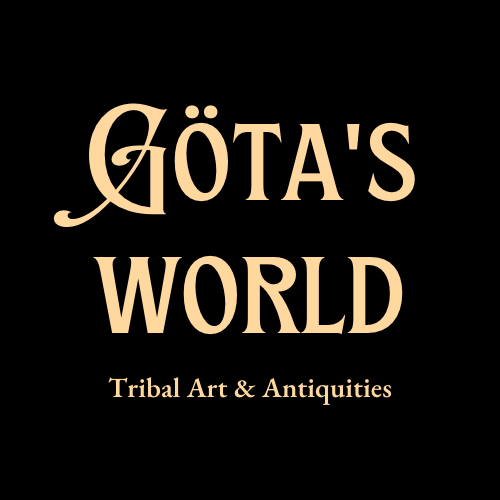Ancient Peshawar Terracotta Female Figure
Ancient Peshawar Terracotta Female Figure
Couldn't load pickup availability
Peshawar District, c. 200 BC – 200 AD, Ancient Gandhara Region, South Asia
A compelling and evocative fragment of a female fertility figure, hand-modeled in rich red terracotta, dating to the late pre-Kushan period. This example includes the complete head and upper torso down to just above the waist, with damage to the top of the head likely due to burial or handling over the centuries. The figure is crafted with short, outstretched arms and prominent, appliqué breasts, while the facial features—pinched nose, incised brows, and slit-pellet eyes—emerge organically from the clay matrix in a style characteristic of the region.
The waist is adorned with vertically incised lines, likely representing girdles or jewelry, while the neck is ringed with a double strand necklace, modeled from applied clay strips and incised for texture. These details reflect the artisan’s intention to emphasize femininity and possibly fertility, though interpretations remain open to scholarly debate.
This figurine closely aligns with the Sar Dheri type, a distinctive group of anthropomorphic terracottas known for their stylized features, exuberant ornaments, and expressive posture. Often dubbed “baroque ladies” by early excavators such as Sir Mortimer Wheeler—though this term may understate their cultural significance—these figures were widely produced in the Peshawar Valley and surrounding areas.
While frequently described as fertility icons or mother-goddess figures, their precise function remains uncertain. Many scholars now regard them as votive or domestic devotional objects rather than formal religious idols. Their exaggerated anatomical features, particularly the rounded and naturalistic buttocks, contrast strikingly with the more schematic frontality of the rest of the figure, hinting at a symbolic duality in representation.
Excavated examples from sites like Chārsada and Sar Dheri establish a strong archaeological context for these objects, securely dating them to the 2nd century BC through the 2nd century AD. Their stylistic and cultural connections extend as far west as eastern Iran, linking them to broader Chalcolithic traditions across ancient South and Central Asia.
This figure stands as a tactile testament to regional craft, spiritual symbolism, and ancient South Asian society’s nuanced understanding of the human form.
Good condition. Surface wear and abrasions commensurate with age, nicks and chip. Encrusted earthen deposits throughout. Size approx. 9,7cm x 6,0cm x 2,0cm.
Provenance: From the estate of Professor Tore Arnborg (1912–2007), a senior United Nations official who served as head of the FAO in West and East Pakistan (now Bangladesh). Acquired abroad and brought to Sweden in the 1960s.
For a similar example see:
Terracotta female figure, Yousef Jameel Centre for Islamic and Asian Art, Indian Art in the Ashmolean Museum, Accession Number: EA1958.3 (https://jameelcentre.ashmolean.org/object/EA1958.3)
Figure, The British Museum, Accession Number: 1880.3127.17 (https://www.britishmuseum.org/collection/object/A_1880-3127-17?selectedImageId=1059683001)
References and further reading:
The Pakistani Collection of Terracotta Figurines in the British Museum, Irfanullah, Fazal Sher, and Amjad Pervaiz, Hazara University Mansehra, Pakistan Heritage 9, 2017.
Indian Art in the Ashmolean Museum, J. C. Harle and Andrew Topsfield, Oxford: Ashmolean Museum, 1987, no. 6 on p. 6, illus. p. 6.
Early Indian Art at the Ashmolean Museum - Catalogue in progress, Ahuja Naman, 2016.




-
Shipping
The shipment will be prepared in the course of 3-5 days and dispatched via Posti Group Oyj or purchased item(s) can be picked up from our shop during the store's opening hours (Tarkk’ampujankatu 4, 00140, Helsinki, Finland). Within the Finland, all items are shipped via Posti Group Oyj unless otherwise requested. We pack the items carefully and mainly in recycled materials because we want to save nature. You will receive the tracking number for your items by e-mail.
-
Returns
Returns and exchange will be accepted within fourteen days (14) of receipt at the purchaser’s cost to include freight and packaging. Items must be returned in the same condition as when they were shipped, and will not be accepted if damaged or altered in any way. Please inform us via email (info@gotanmaailma.fi) or by calling +358408408352 before sending. We do not accept returns more than 14 days after delivery.




